In the late 80’s and early 90’s Shinobi was one of Sega’s most important franchises, but in recent years the series has been almost forgotten. Since 1995 the Shinobi canon has only seen 3 new titles (excluding this one), and a new one hasn’t come out since 2003. This game, now the fourth in the series to be titled simply “Shinobi,” aims to regain the lost relevance the series once had. Rather than trying to reinvent the formula like Shinobi (2002) did this game instead tries to modernize the classic formula that made games like Shinobi (1987) and Shinobi (1991) the great games they were. In addition to the four “Shinobi” games in the canon there are also two titled “The Revenge of Shinobi.” For the sake of this game I should hope Sega spent the time they didn’t spend thinking up a meaningful title on fine-tuning the game or we might be in trouble.
It turns out Sega also neglected Shinobi’s manual. I know no one really reads manuals, but this game embraces that fact—there are only 3 pages! So once you read the button layout, how to connect your 3DS to wireless Internet and the Limited Warranty, including the bold, italicized, all-caps, larger-than-regular-titles LIMITATIONS ON WARRANTY section, you can immediately start playing the game. The manual says that you can download the full manual off Sega’s website, but the link doesn’t work for me. Really this isn’t a big deal. The Canadian version comes with a French manual too so I don’t feel too ripped off, especially since in French the bold, italicized, all-caps, larger-than-regular-titles thing reads RESTRICTIONS SUR LA GARANTIE which is a little bit longer.
The game actually teaches you which buttons to use as you play it, so you won’t find yourself completely lost if you usually rely on manuals. I’m actually really bad at remembering to parry attacks (mainly because it requires the use of the R-button), and the game keeps reminding me I can do that even in the later levels. Of course if it were mapped to a button that was convenient to use I’m sure I wouldn’t have this issue, but I would say that’s a hardware failure more than it is the game’s fault, and you can change the button layout to suit your needs. One thing this game is missing is a dodge button though. What the hell kind of ninja can’t dodge?
You might want a manual for is the story though. I played this game and I had no idea what the hell was going on, other than stage one takes place in 13th century Japan and every other level takes place in 21st century Japan. According to the box:
Betrayed by your friend you must battle an ancient and evil clan in this epic continuation of the acclaimed Shinobi™ series.
I mean, that works for me. There is no oral narrative or anything and the story is just told with images which don’t, to me, hint towards an epic story line, or even an ancient clan. The only time there’s a narrator he just says meaningless clichés and metaphors which don’t advance the plot or make any sense. They probably mean more in Japanese than their English translations do, but all that says is that localization was also put on the back-burner. Sega is running out of back-burners.
But, really, what is the story of any Shinobi game? You’re a ninja, people are trying to kill you (in this case it’s futuristic people, which further problematizes this notion of an ancient clan), try not to die; that’s all you really need. The importance is in how the game plays. Shinobi is very difficult, even on the easiest setting, and prides itself on this fact. The game wants to have that old-school difficulty in a modern, updated form, and it succeeds. Enemies attack in patterns and force you to utilize all of the tricks you’re supposed to know. Platforming sections force you to make use of all the jumping techniques available to you. It’s not like most games where you pick up new skills as the game goes along and then you might as well forget the old ones because you’ll never need them again. No, this game gives you everything you need from the start and instead throws increasingly difficult patterns at you. I’m a big fan of this and I think it helps to make the game experience different from the other games on the market today. It’s almost cliché for games to base levels entirely around new power-ups and skills, so it’s nice to see a game that completely rejects that. It’s also nice to play a game that has a difficulty curve that can’t be mastered by pressing the button a little faster.
That said, there are times when the game can feel pretty cheap. There are a few points where no human being could be reasonably expected to react as fast as the game wants you to. In that sense the game is a little too reliant on patterns. Especially with the harder difficulties, it seems unreasonable for the game to demand such excellence from you. There are enemies on the edges of all sorts of platforms, enemies with weapons that are a little bit too convenient (homing missiles when you have to do platforming), backgrounds that destruct and become hazardous as you’re running along a path; this kind of thing happens all the damn time. Levels can feel a bit repetitious at times, so it can also be difficult to memorize them properly which only adds to the frustration. The time that you’re invisible/invincible after getting hit is also abysmally short. One of the appeals of retro gaming is that sweet period where you can throw caution to wind and wail on the guy with a machine gun, but in this game you only get about a second and then you’re fair game again. It is not uncommon for a machine-gun enemy to hit you twice with bullets from the same clip, nor is it rare to be juggled around by enemies. But really if you approach the difficulty like you would a retro Shinobi game this isn’t that big of a fault. Once you figure out what to do in a level you can pretty much whip these guys around like Will Smith’s daughter’s hair.
Boss fights in particular start out incredibly annoying, but are often very fun to play once you get them all figured out. They are all very different so you need to come up with new strategies for each fight. There are a few mini-bosses that get reused, but this only makes you feel like a badass when you destroy them in no time at all. In easy mode there are checkpoints at the start of every boss fight so when you die you get to restart directly at that battle. It is annoying that there is no way to heal yourself before a boss though. Some bosses have easy tricks to them, so it sucks to figure it out but die before you can kill the boss because you only had a third of your health to start the match. Overall, the these fights are some of the most enjoyable moments in the game.
There are a few stages that are a real pain in the ass though. I’m talking about the on-rails stages where you have to ride something and simultaneously dodge stuff and kill enemies. These levels are not fun. The horse one (and one where you’re somehow jetskiing or something) go diagonally, so it’s not even easy to tell where things are coming from. The car and plane stages insta-kill you if you fall off the vehicle you’re riding on, but at least they come at you head-on. These sections are not very long, but you will spend a lot of time on them because it is very hard to not die in them. We’ll come back to why spending a lot of time in these stages make them even more annoying.
The game’s atmosphere is incredible. The music and art style are very Japanese, but in an accessible way so you don’t have to be a guy like me who spends too much time watching anime to appreciate the game. The musical score is actually a very interesting mix between traditional Japanese music and more contemporary rock music, which makes a lot of sense given its futuristic setting. The cutscenes are all original anime which look absolutely gorgeous and have a very interesting comic book feel to them, even if they tell you almost nothing. The cutscenes and levels are vibrantly coloured and pretty to look at. Enemy design is differentiated and there’s never any ambiguity about which attacks you’re about to get hit with, something you come to appreciate in this game especially.
Where the graphics fall apart are in their 3D aspects. This is a 2D game so to say the 3D feels tacked on would be an understatement. And to make it worse, the 3D doesn’t work particularly well for me. I’m not sure if I’m one of those people who can’t see 3D properly or what, but no matter how I hold the system I always find I’m seeing ghosts of characters and doubled up images. I tend to play the game in 2D, but unfortunately there are some sections where platforms are somewhat ambiguously placed and 3D is the beneficial way to play. To be honest though this never seems to get you into situations where things seem to be platforms but aren’t, in fact the opposite is the case – half the time I can’t see anything that looks like a platform. I play on the easiest difficulty which gives you infinite lives, so I usually just experiment, but that’s not something you could do on the harder difficulties without infinite lives. Also, a lot of objects in the foreground of earlier levels obscure the actual field of play.
There is a points system in this game, I guess because retro games had points systems. It doesn’t seem to be good for much, other than pissing you off. When you hit an enemy the standard amounts of points you get are 500 for projectiles and 1000 for katana hits, but when enemies hit you the standard values you lose are 15,000 and 30,000 respectively. For some reason blocking an attack gives you 4500. When you kill an enemy you gain a larger sum depending on the size and type of the enemy, and there is a multiplier, but still, it is unfair how easily you can lose points. I took too long to beat a level and I was given a 1,236,000 point penalty. Over one million! I mean sure, everything’s made up and the points don’t matter, but it’s a pain in the ass to finally work your way through one of these blistering levels only to be told you took too long to do it and that you lose (in this case) well over half of the points you’ve earned. Well shit, if I didn’t have to do those stupid on-rails stages I would have that level beaten about ten minutes sooner.
On the whole, this game doesn’t do too badly. There are a few areas that could use some polish, but most of the time they’re areas which are inessential to enjoying the game. Shinobi gets it right when it needs to, and I think it does a pretty good job of creating a new game with a retro feel. I’m not sure that it’s going to revitalize the Shinobi canon, but hey, there’s only been two “Revenge of Shinobi” games so far, so statistically this game could use a sequel.
Final Score: B

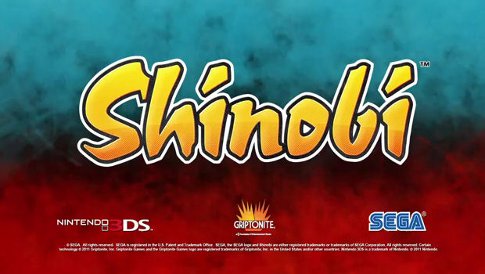
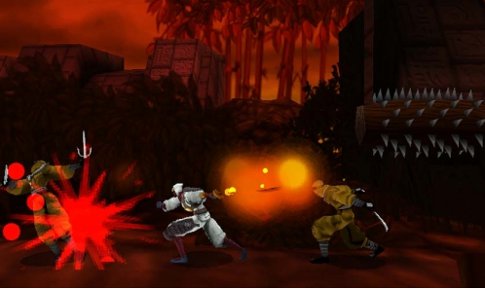
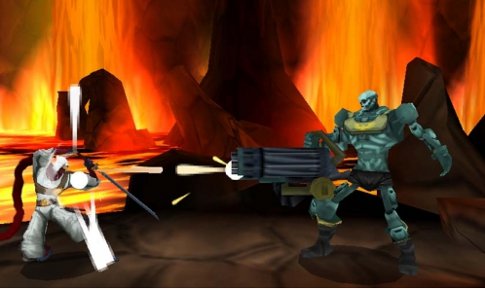
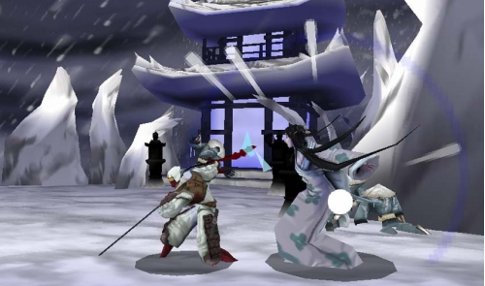
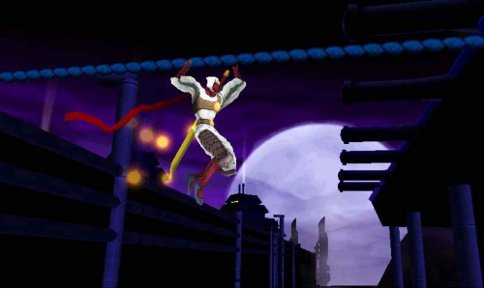

Solid review, Pat. Never thought I’d read a Willow Smith reference in a SEGA review! Sounds like the game keeps the spirit of the old games with the mix of on-rail and side-scrolling stages, and it’s nice to see there is still a little bit of difficulty, although I hope the difficulty is not in the league of The Revenge of Shinobi on the Genesis. In fact, most of the old games had some pretty unforgiving difficulty levels on some parts, particularly the end bosses. I’m all up for a challenge, but insane difficulty is one thing I’m glad has been kind of left back in the 16-bit days. Excited to play this game though, the Shinobi franchise is pretty much all gold, it’s probably been SEGA’s most consistently good franchise over the years, and it’s good to see that while this one has flaws it still upholds Shinobi’s good name.
Hm, I think I’m going to get this for myself tomorrow!